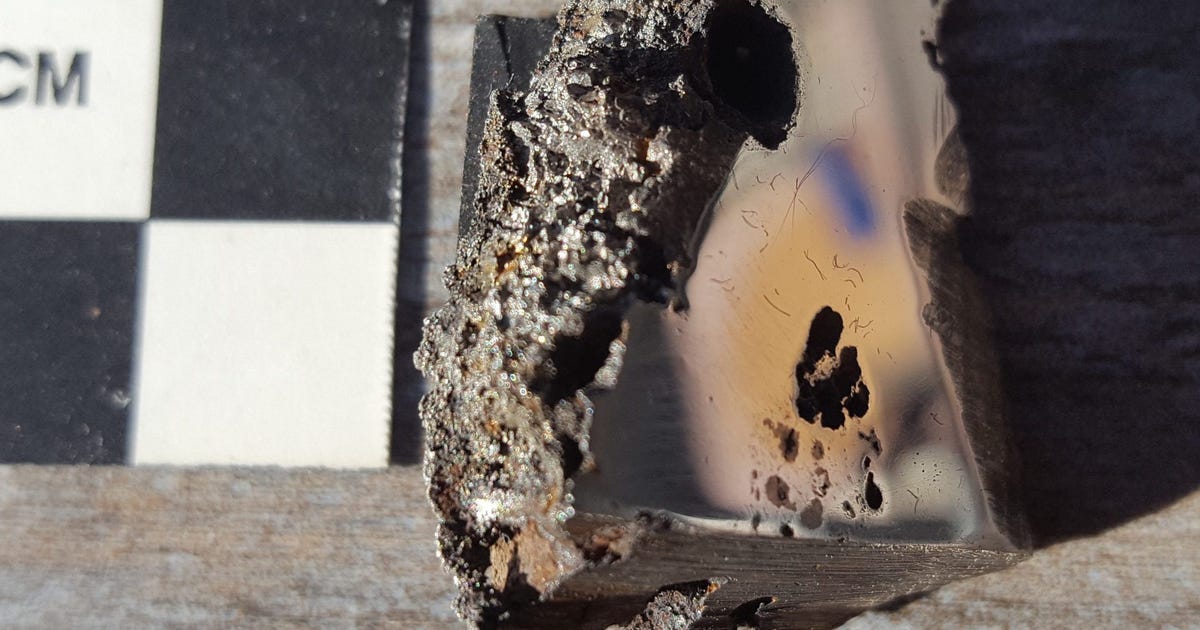
A giant meteorite discovered in Somalia turned out to be like a scientific Kinder egg … full of surprises. The El Ali meteorite is named for its landing location near the town of El Ali. It weighs in at 16.5 tons (15 tonnes) and is one of the largest meteorites ever found. Scientists researching its composition discovered it was hiding two new minerals never before seen on Earth.
A research team at the University of Alberta in Canada discovered the minerals while examining a small 2.5-ounce (70 gram) slice of the space rock. The new minerals are named elaliite (for the meteorite’s nearby town) and elkinstantonite in honor of Lindy Elkins-Tanton, the principal investigator for NASA’s upcoming Psyche asteroid mission.
“Whenever you find a new mineral, it means that the actual geological conditions, the chemistry of the rock, was different than what’s been found before,” said geologist Chris Herd, curator of the University of Alberta’s Meteorite Collection, in a statement on Monday. “That’s what makes this exciting: In this particular meteorite you have two officially described minerals that are new to science.”
Herd brought in mineralogist Andew Locock to help analyze the meteorite, which has now been classified as a type of iron meteorite. Locock quickly identified the new minerals by comparing them with similar minerals researchers had synthetically created in lab settings.
“That was phenomenal,” Herd said. “Most of the time it takes a lot more work than that to say there’s a new mineral.”
Dying Space Missions Remembered in Inspirational Final Images
Herd presented the team’s findings at the Space Exploration Symposium at the university earlier this month. The next step in the research will be to see what the minerals can tell the scientists about the formation of the meteorite.
While the El Ali meteorite has only recently come to the attention of the science community, it was reportedly known to locals in Somalia who traced its origin back by at least five generations. Only a small part of the meteorite has been extracted for study. According to Herd, the research team heard the main meteorite was moved to China, where it may be up for sale.
Scientists still hope to get their hands on more of the meteorite. They have already identified a possible third new mineral, and there could be more surprises hiding out in the fallen space rock. The new minerals could be of interest beyond geology and astronomy. “Whenever there’s a new material that’s known,” Herd said, “material scientists are interested too because of the potential uses in a wide range of things in society.”


